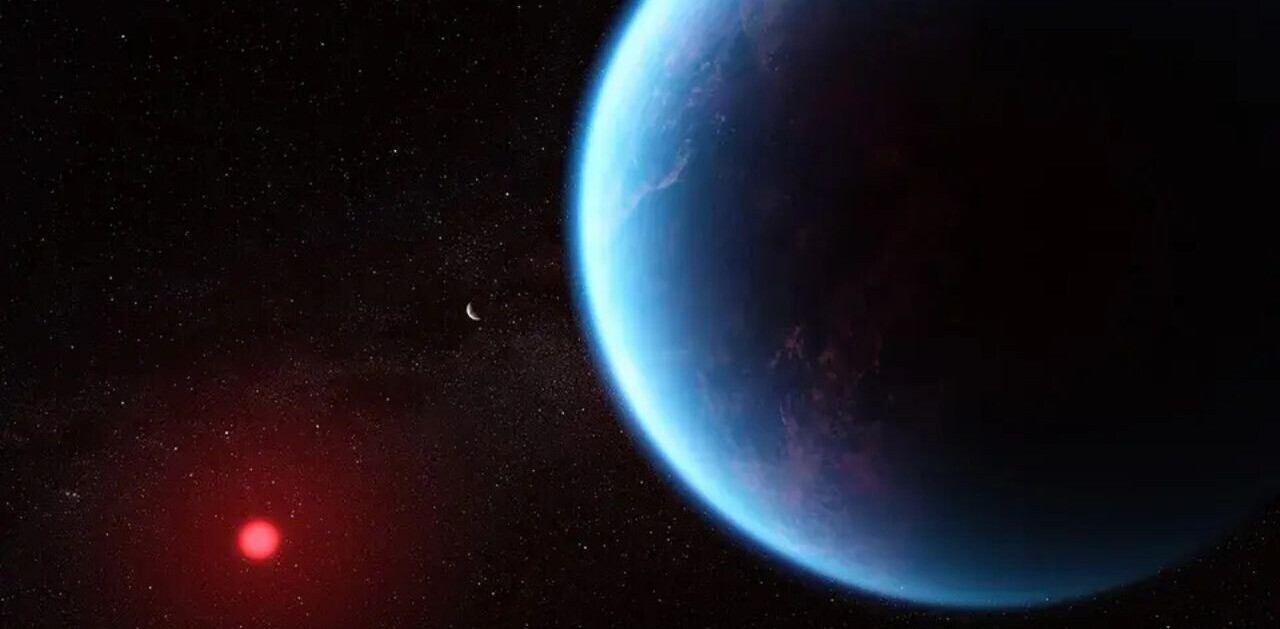
Humans are within years of sending the first crewed mission to Mars. And then what? Maybe another 100 years from now we’ll eventually have the resources to launch deeper crewed missions from there, eventually reaching as far as… somewhere near Neptune. Our current method of space travel simply isn’t good enough to get us out of our own galactic suburb. And we can thank Einstein for that.
A little over a century ago he came up with this big idea that it would take more energy than there is in the entire universe to make an object travel faster than the speed of light. That’s a big bummer for anyone who’s ever dreamed that humankind would one day “explore strange new worlds” and “seek out new life and new civilizations.”
We’re going to need warp engines, or something similar, to “boldly go” much further than the confines of our own solar system. But rules are rules and we’re unlikely to figure out how to move a spaceship faster than the speed of light any time soon. There might, however, be a way to cheat.
Joseph Agnew, an undergraduate from the University of Alabama in Huntsville’s Propulsion Research Center, thinks we can create a warp engine capable of riding a space wave into the future. No, that’s not a crappy advertisement for a 1980s cola product. It’s science.
According to his fascinating research paper:
One particular concept, which will be discussed here, stood out among the rest, and was brought into existence mathematically through the work of Miguel Alcubierre. Inspired in part by the drive of like name in the Star Trek series, he devised this metric which served as a solution for Einstein’s General Relativity Equations, and described a fascinating superluminal-apparent concept.
In essence, what this metric describes is a way of inducing a curvature of spacetime in a manner akin to an ocean wave. One creates a ‘high-pressure’ curvature behind, and a ‘low pressure’ curvature in front, and the vessel inside of this resulting ‘bubble’ is moved with space to a destination.
Basically if you can’t go faster than light, make the universe expand and contract around you so that you’ve actually moved farther than you could have traveling at the speed of light, without ever breaking Einstein’s speed limit.
Alcubierre’s reseach paper described a groundbreaking warp theory that worked within the confines of Einstein’s relativity. The very idea that such an idea could logically be put to paper in the context of scientific rigor is astounding. But the big question of “how” remained. As Agnew put it in his paper:
It is a great advancement to describe a set of equations that appear to allow spacetime to behave in a certain manner, but scrutinization is required to find the mathematical and physical objections to its actual manifestation.
On the mathematical side, there were raised flags about the energy states and requirements of the drive, the ability to control the warp bubble from inside, both when moving and when stationary, and the potential causality violations associated with ‘apparent’ superluminal speeds.
On the physical side, the primary question was “how?”, which came with an array of sub-topics which needed to be addressed, such as the existence of exotic matter and of spacetime curvature, and the ability to harness and manipulate those.
Agnew lays out some potential solutions – based on what must have been years of exhaustive research – that have a plausible foundation in current technology. In essence, if the plan is to create a giant wave in the space-time continuum in order to warp a space craft from point A to point B, the problem can be broken down into finding the fuel, figuring out how to make a wave, and making sure we don’t break something important… like reality.
The first part’s easy, we just need to continue our research on exotic matter and we’ll eventually, hopefully find a way to power this thing. The second part, creating the wave, might sound like the hard part, but really it’s just a matter of extending the current breakthrough research into gravity waves – perhaps we can use exotic matter-powered electro magnets to cause some sort of programmable black hole.
The real hard part is dealing with the radiation and determining what happens when we have the human audacity to believe it’s okay to go around stretching and squishing the very fabric of the universe. There’s some concern that high speed quantum collisions could have some uh, negative effects such as ripping a hole in the universe itself. But, according to Agnew, there’s reason for hope there as well:
One of the most useful developments on this front, from a very recent 2018 paper, describes the problem in question, and proposes that it may be a non-factor. To summarize their highly important progress, they note that the incoming matter and photons will be slowed down when entering the front, warped region (using the Broeck metric), and therefore will not initiate high velocity collisions.
Agnew’s research is both a roadmap for current researchers and a really cool paper to inspire future ones. The ideas inside it are outrageous, but the most compelling research often is. A warp drive is clearly plausible and, despite the fact that only a handful of researchers are taking it seriously, the past decade has brought a series of significant breakthroughs in relative fields that makes it seem downright likely.
What do you think? Will mankind one day flit across the universe like a temporally-unfettered firefly, or are we doomed to muck about in our own galaxy’s filth forever?
H/t: Universe Today
Get the TNW newsletter
Get the most important tech news in your inbox each week.




